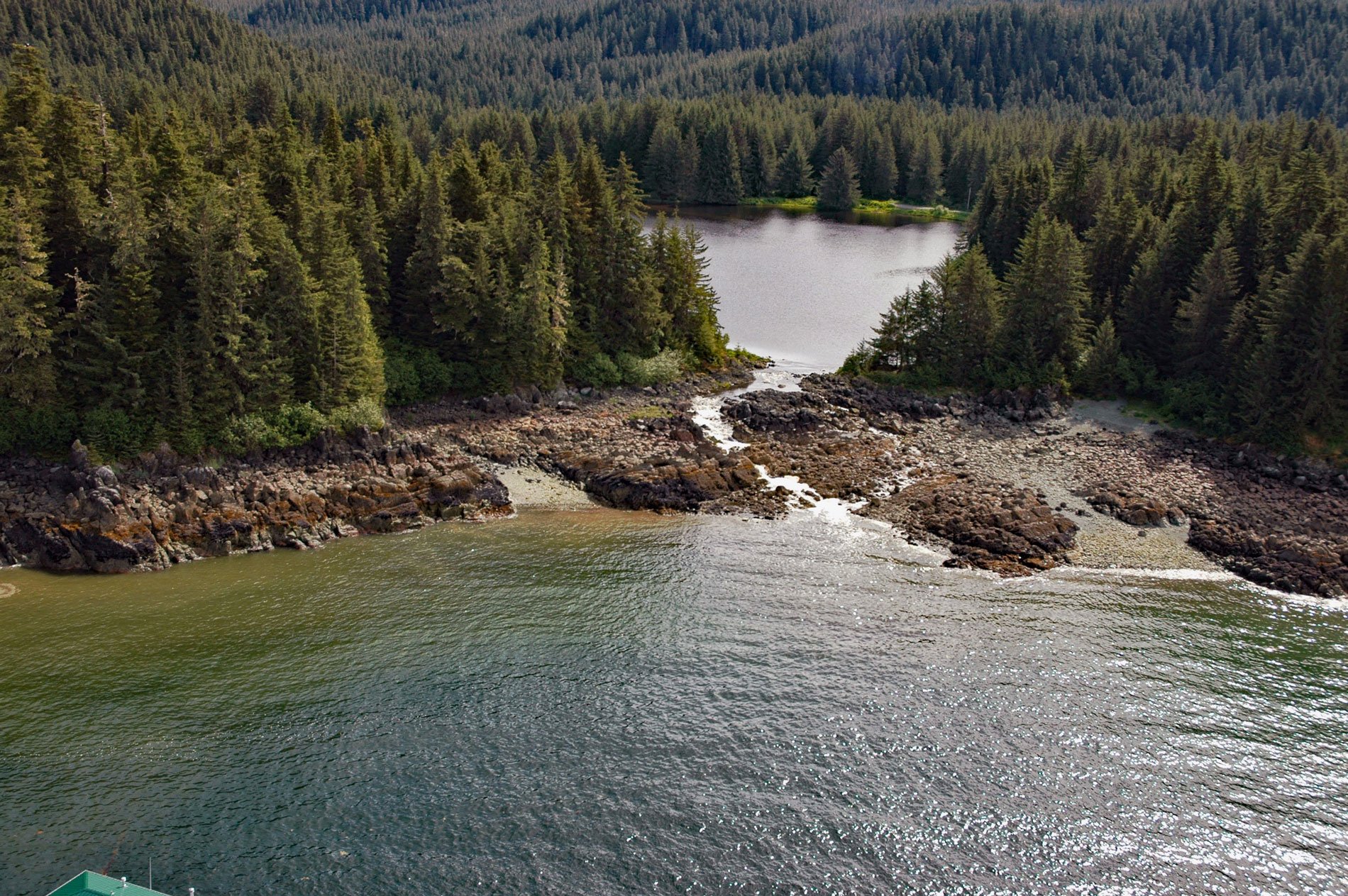Peterson Lagoon is the estuary of Peterson Creek that starts from the outlet of Peterson Lake at an elevation of 734 feet (224 m) on Auke Mountain and flows north-northwest for 4 miles (7 km) to the lagoon that connects to Eagle Harbor, about 56 miles (90 km) south-southeast of Haines and 19 miles (31 km) northwest of Juneau, Alaska. Eagle Harbor is a cove about 0.5 miles (0.8 km) across on the eastern shore of Favorite Channel. Peterson Lake and Creek were named for John G. Peterson, who was a Juneau businessman and miner. He arrived in Juneau from Germany in 1888 and initially worked as a tinsmith. In 1897, he and his wife Marie staked gold claims and operated a hard rock mine 0.25 miles (0.4 km) east of Peterson Lake, hauling and crushing rock with a three-stamp mill. Workings included 4 shafts, 11 adits, and numerous trenches. This prospect is in the Juneau Gold Belt, consisting of more than 200 gold-bearing quartz veins that form a zone 99 miles (160 km) long by 5 miles (8 km) wide along the western margin of the Coast Mountains, and have produced a combined total of 7 million ounces (198,447 kg) of gold.
Peterson Creek is a spawning stream for Pacific salmon, steelhead, and Dolly Varden. The temperate rainforest of Southeast Alaska, which receives an abundance of precipitation in most years, has thousands of streams and rivers inhabited by salmon that historically provided the economic foundation of the Tlingit people. Their culture was built on sophisticated systems of capturing mass quantities of salmon, as well as processing and storage that produced surpluses, in most years, on which the Tlingit subsisted and bartered during the winter months. A wide variety of techniques for capturing salmon were developed in different locales. The Chilkoot erected small wooden platforms and used a gaff hook to capture the salmon that traveled upstream. The Yakutat Tlingit constructed massive weirs to funnel fish into fish traps. The Auk Tlingit used wooden stake weirs and stone walls in the intertidal to funnel fish into woven cylindrical baskets. Although effective, these techniques allowed many fish to escape capture and proceed to the spawn beds thereby sustaining the population. Today, Peterson Creek is a popular sport fishing stream due to a nearby road leading to Juneau. However, coho salmon returning to Peterson Creek in 4 of the last 6 years have failed to meet the sustainable escapement goal established by the Alaska Department of Fish and Game and the creek has been closed to salmon fishing.
Peterson Lagoon is now part of Ernest Gruening State Park. Ernest H. Gruening was a journalist and politician who was the governor of the Alaska Territory from 1939 until 1953, and a U. S. Senator from Alaska from 1959 until 1969. Gruening had a cabin on Peterson Lagoon where he wrote much of the manifesto for statehood called ‘The State of Alaska’ in 1953. The cabin was called ‘Eagle Rock‘ and Gruening entertained national and foreign leaders here, including Adlai Stevenson, Governor Earl Warren, and numerous U.S. Senators. The park is managed by Alaska State Parks and is now used for an artist in residence program. The program celebrates the lives of two Alaskan artists, Dorothy Gruening and Rie Muñoz. Dorothy Gruening was an ardent supporter of the arts community during her lifetime and hosted a variety of artists, writers, and musicians at the Eagle Rock cabin. Rie Muñoz was known for her bright watercolor paintings depicting everyday life in Alaska, particularly the people in Alaskan Native villages and of Southeast Alaska. Read more here and here. Explore more of Peterson Lagoon and Eagle Harbor here:

